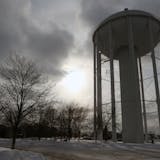Reprinted from the Sept. 4, 1939, issue of the Minneapolis Morning Tribune.
The more than 50 years that have elapsed since the first Labor Day was observed in New York City has seen a gradual change in the character of the observance of that day.
The first resolution proposing a Labor Day suggested that the occasion be marked by a demonstration, such as a street parade, "which would publicly show the strength and esprit de corps of the trade and labor organizations."
This idea has continued to animate most Labor Day celebrations although, except in a few cities, the day has deteriorated into just another holiday, offering an extended weekend for greater recreation. The day has become virtually just another day of rest for the laboring man.
Nonetheless, the cessation of activity brought about by Labor Day gives an opportunity to focus public attention on the aims, ideals and achievements of the workers, which is the original purpose of the day. The past year, as well as those immediately preceding it, have seen organized labor making widespread gains in membership and influence. Legislation of particular significance to labor, approved by state and federal governments, has become of increasing importance. Every state in the union now has unemployment compensation acts on its statute books and practically all have made provisions for old age pensions. Federal and state regulations regarding minimum wages and maximum hours are developments of genuine importance to labor.
Labor is today confronted by two problems of far-reaching importance. The first of these is unemployment. More than 10 million wage earners in the United States are still unemployed, and that figure has remained substantially unchanged for the past six years. Despite lavish expenditures by the government, the industrial pump has not been sufficiently primed for private enterprise to reabsorb workers forced out of jobs by the Depression.
This is a matter of concern for both the jobless and the man who is employed, for as long as the former is obliged to exist upon public funds the taxpaying worker must bear the burden of supporting him.
The second important problem is the one involved in the internal dispute over the type of labor unionism to be fostered in this country. Issues of great importance to labor and to the nation are centered in the current dispute between industrial and craft unionism.


